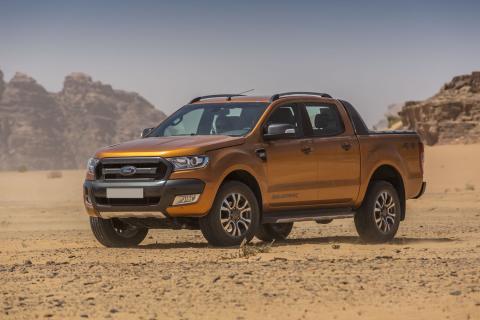
- Ford encourages responsible driving from fathers, both on-road and off-road to ensure a sustainable environment for their children
- Venturing off-road comes with huge responsibility. By heading off the beaten track you have the potential to damage the surrounding environment, including flora and fauna
Fathers have a great responsibility to ensure they preserve the environment for their children. This Father’s Day, Ford Motor Company, through its forward-thinking approach to environmentally responsible and sustainable manufacturing, would like to offer fathers in the Middle East and Africa regions some good tips.
While Ford is doing its best to ensure a sustainable environment by placing greener cars on the road (and using greener manufacturing processes), sustaining the environment is everyone’s responsibility. Here is how you can make a difference: On the road
- EcoBoost, Ford’s technologically advanced engine platform, ensures lower CO2 emissions and better fuel consumption. It ultimately has a positive effect on the sustainability of our environment without any compromise on engine performance.
- Where available, try to keep the auto-stop function on your car active. This function saves petrol and reduces CO2 emissions. Carbon emissions are grouped under “greenhouse gases” and are directly related to climate change – specifically global warming.
- Practice safe and courteous driving. The more aggressively you drive the more fuel you consume.
- Keep your litter and cigarettes inside the car and dispose of it responsibly when you get to your destination. Litter is not only unsightly but it can kill plants or stunt their growth, destroy natural areas, and can cause harm to animals and birds.
Off-road Venturing off-road comes with huge responsibility. By heading off the beaten track you have the potential to damage the surrounding environment, including flora and fauna.
- Deflate tyres when on softer surfaces, such as loose sand. This will increase the contact area with the sand and assist with flotation, which means that the tyre will ride on top of the sand instead of digging down into it and possibly getting stuck.
- Always drive on established tracks. Never create new routes or tracks as this damages the sensitive ecology of the environment you are exploring.
- The rule for off-road driving is to tackle each surface as slowly as possible, and as fast as necessary. Driving over an obstacle slowly minimises the vehicle’s impact on the terrain, and ensures that there is a reduced risk of damage to the vehicle and occupants. Certain terrains, such as soft sand, do require a bit of momentum and an extra dose of speed may be required in order to get through. Use only as much speed as is necessary however, and always be mindful of what is on the other side. Keep an eye out for nesting birds or animals. It is always advisable to check what is on the other side before venturing over a difficult patch.
- In a 4x4 vehicle, such as a Ford Ranger, it is advisable to engage four-wheel drive high-range as soon as you leave the tarmac. This ensures even power distribution between the front and rear wheels, improved grip on slippery surfaces, greater driving safety and reduced environmental impact as the wheels are not spinning freely and digging unnatural trenches. Remember to disengage 4WD when returning to the road.
- For rough off-road terrain, engage low-range 4x4 mode. This reduces the vehicle’s speed, allows more torque transfer to the drive wheels and gives greater control, reducing the risk of scraping away stones on the route. Careful modulation of the accelerator will avoid excessive wheel spin and damage to the surface of the terrain.
Categories
- Log in to post comments
